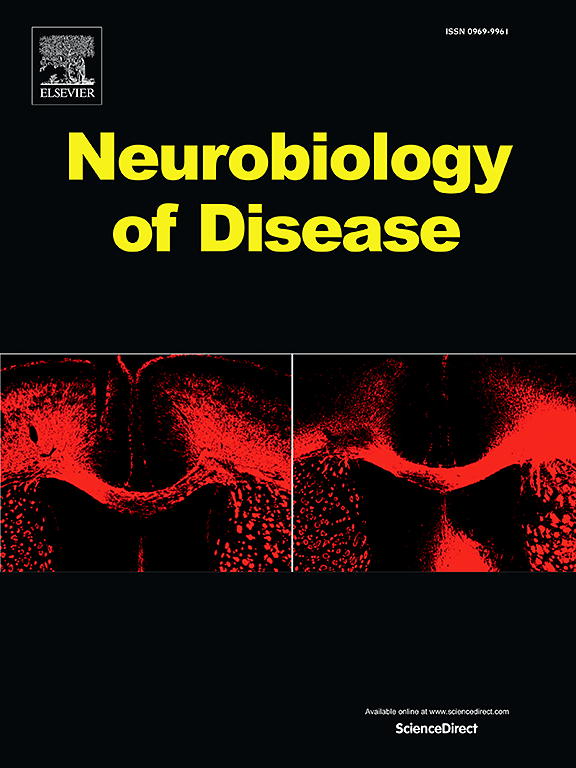Glymphatic dysfunction and neurodegeneration in ALS: Longitudinal insights from rNLS8 TDP-43 mice
IF 5.1
2区 医学
Q1 NEUROSCIENCES
引用次数: 0
Abstract
Dysfunctional Tar DNA binding protein-43 (TDP-43) is found in approximately 95 % of all people with amyotrophic lateral sclerosis (ALS). Recent evidence suggests that the glymphatic system, which clears the brain of waste proteins, is impaired in ALS and may contribute to the accumulation of TDP-43. This study extends this work to investigate how glymphatic function changes over time in the rNLS8 doxycycline (Dox)-dependent TDP-43 mouse model of ALS. Motor function, advanced MRI biomarkers of neurodegeneration, and cortical glymphatic pathway gene expression were assessed together with dynamic contrast-enhanced MRI (DCE-MRI) assessment of glymphatic function at 0-, 3-, 7-, and 21-days after removing mice from Dox feed to initiate cytoplasmic human TDP-43 expression. A trend toward increased glymphatic influx was observed at 3-days post-Dox, together with MRI evidence of brain changes that occurred in the absence of hind-limb clasping and motor impairment. Glymphatic flow is facilitated by aquaporin-4 (AQP4) water channels polarized to astrocytic end feet. We found that while glymphatic function normalized to control levels at 7-days post-Dox, AQP4 expression in the cortex was significantly decreased. After 3-weeks of human TDP-43 expression, glymphatic dysfunction, weight loss, neurodegeneration, motor impairments and astrogliosis were observed. Our findings highlight early glymphatic dysfunction in ALS, suggesting its potential as a therapeutic target.
求助全文
约1分钟内获得全文
求助全文
来源期刊

Neurobiology of Disease
医学-神经科学
CiteScore
11.20
自引率
3.30%
发文量
270
审稿时长
76 days
期刊介绍:
Neurobiology of Disease is a major international journal at the interface between basic and clinical neuroscience. The journal provides a forum for the publication of top quality research papers on: molecular and cellular definitions of disease mechanisms, the neural systems and underpinning behavioral disorders, the genetics of inherited neurological and psychiatric diseases, nervous system aging, and findings relevant to the development of new therapies.
 求助内容:
求助内容: 应助结果提醒方式:
应助结果提醒方式:


